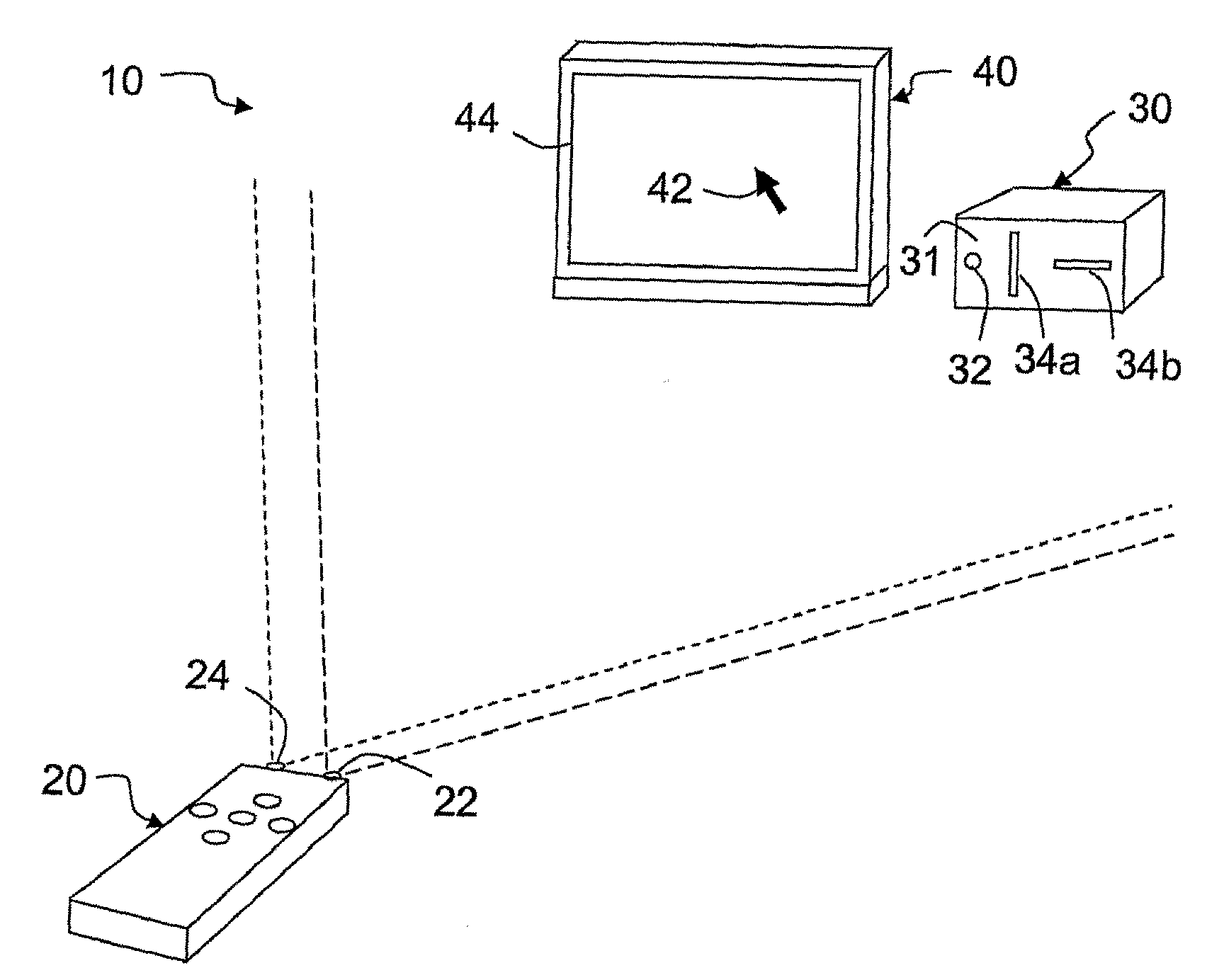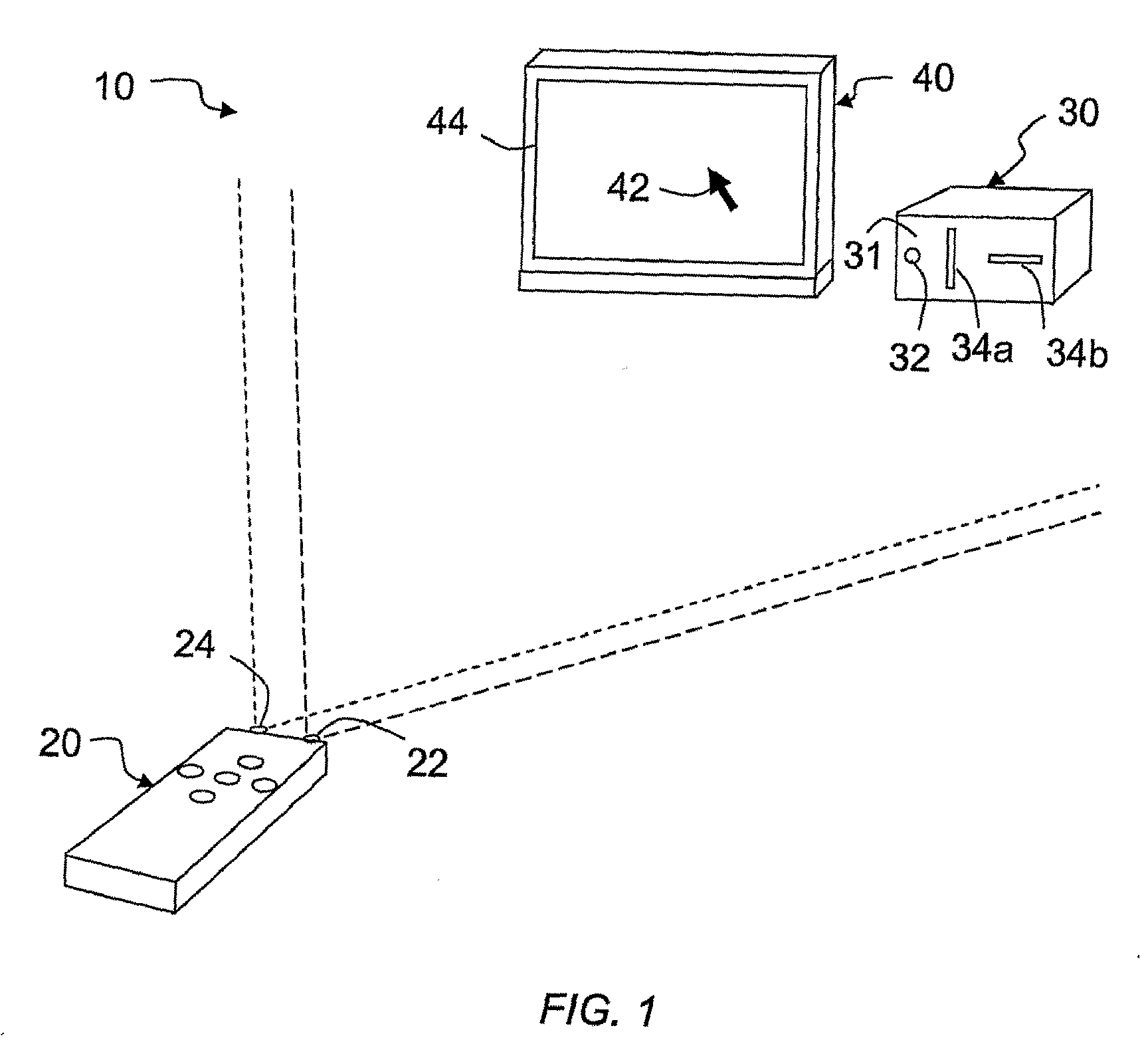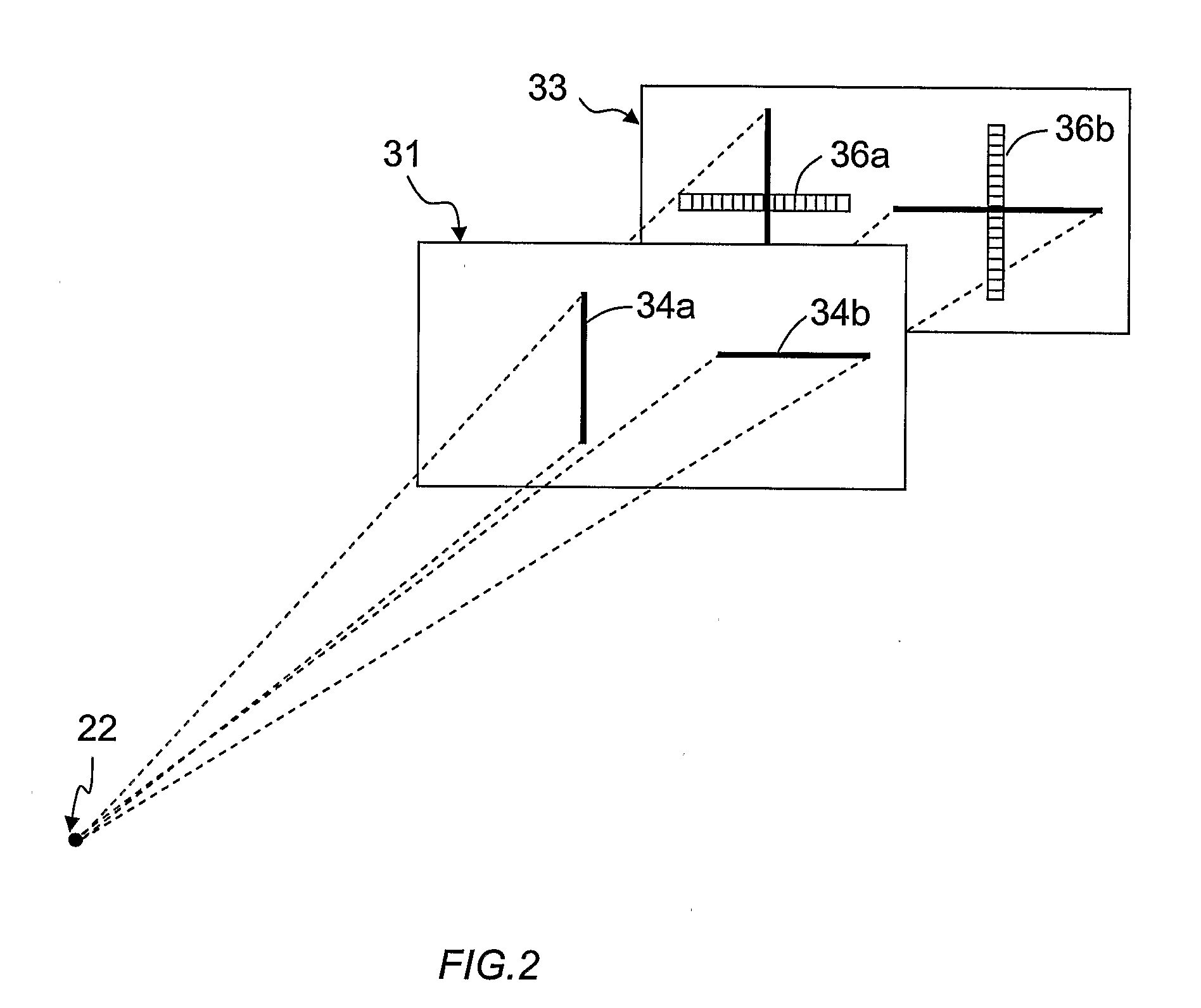Free-Space Pointing and Handwriting
a free-space, handwriting technology, applied in the direction of instruments, electric digital data processing, cathode-ray tube indicators, etc., can solve the problems that the pointing device cannot be used naturally as a free-space handwriting device, users may feel tired in their wrists, fingers, wrists, etc., to achieve the effect of limited power consumption and simple design
- Summary
- Abstract
- Description
- Claims
- Application Information
AI Technical Summary
Benefits of technology
Problems solved by technology
Method used
Image
Examples
Embodiment Construction
[0075]The perspective view of the preferred embodiment of the present invention is shown in FIG. 1. FIG. 1 describes a system 10 according to the present invention comprising a portable free-space data input device 20 being illustrated with a means for transmitting a first set of pulses, which is here an infrared emitting diode 24, and a means for transmitting or reflecting a second set of pulses, which is here a light emitting diode 22, where both means are mounted on one end of the portable free-space data input device 20. Both of light emitting diode 22 and infrared emitting diode 24 have a wide light emitting angle. The light emitting diode 22 transmits the second set of pulses and is the light source which should be detected by an optical position detecting device 30. Infrared emitting diode 24 transmits the first set of pulses and is used to implement a wireless command and synchronization signal transmitter. An optical position detecting device 30 is placed beside a display u...
PUM
 Login to View More
Login to View More Abstract
Description
Claims
Application Information
 Login to View More
Login to View More - R&D
- Intellectual Property
- Life Sciences
- Materials
- Tech Scout
- Unparalleled Data Quality
- Higher Quality Content
- 60% Fewer Hallucinations
Browse by: Latest US Patents, China's latest patents, Technical Efficacy Thesaurus, Application Domain, Technology Topic, Popular Technical Reports.
© 2025 PatSnap. All rights reserved.Legal|Privacy policy|Modern Slavery Act Transparency Statement|Sitemap|About US| Contact US: help@patsnap.com



